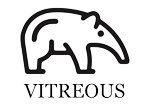Learn more about the synthetic paper labels
Due to the high competitiveness of manufacturers in different industries, in addition to the optimal quality of the product, the appearance and manner of packaging the products is important in order to overcome the choice of the customer to the product from other competitors.
The product label also has the appearance of packaging, which puts manufacturers in the industry to use different materials with a variety of functional and functional features. Synthetic paper and paper paper are some of the items that, given their specific characteristics, are used in certain cases, and sometimes general uses, which we will have a short look at:
1) Synthetic paper
For a long time, any paper used in the manufacture of synthetic resins derived from oil as raw material was called synthetic paper (synthesized and synthetic), but today, with the widespread industry, the exact definition of papers There is no syntax. Synthetic paper can be considered a mixture of organic and inorganic materials. Synthetic paper should have both film properties (such as long life, water resistance and tensile properties), and paper properties (such as printability, white, brightness, gloss, and lack of light). But in fact, synthetic paper is not really a paper.
The label, which is synthetic paper, has both film properties and paper properties.
Synthetic paper materials, polymers and additives, and calcium carbonate. In most cases, the amount of calcium carbonate does not exceed 40%.
Synthetic resins based on resins are usually divided into two general categories according to the production methods:
- Synthetic film paper (polymer):
In this method, filler materials (usually calcium carbonate) and additives (connective and homogenizing agents) are added to synthetic resins and then further melt and granulate with an extruder. Then the film is formed by extruding the material from the die-mold.
- Synthetic paper fiber (fibers):
In this method, first, the synthetic resins are dissolved, and then through a nozzle in the form of endless fibers, like a synthetic texture. The fibers are then melted at a high temperature, and interlayer bonds between them are formed. The characteristic of this kind of synthetic paper is its extraordinary strength, but it is not smooth against the paper and is therefore less suitable for writing and printing.
There is also a third category, which is made of limping a film layer onto cellulosic paper, and is less known as synthetic paper.
- Synthetic paper with film:
These types of synthetic paper are produced by filtration of a film layer on the surface of conventional paper. This method provides mechanical strength and water resistance. Despite the tiny cavity in the film, this product can display a decent print close to conventional paper. Since the product is the inner layer of the paper, its strength and resistance to water is less than the film's synthetic paper.
2) Paper stone:
Paper paste is a type of synthetic paper and is a synthetic paper film, 50-80% of which is calcium carbonate (filler material), and 45 to 15% of it is high-density polyethylene or polypropylene, or in some cases both According to different applications, it can have a thickness between 50 and 400 microns. Regarding the use of polymer resins in this product, the absorption of water in it is almost zero, also known as waterproof paper. On the other hand, because of the whiteness of the raw materials, there is no need to use bleach in its production. Full compatibility with all offset printing machines, coordination with all the inks and solvents used in offset printing, the ability to dry the composite on paper, immediately after leaving the printing press, the ineffectiveness of the ambient temperature, which is one of the main problems in creating Print quality is high and fire resistance is another feature of paper.
Paper paste has a non-toxic resin that is used as a glue for bonding stone powder molecules. This material is cracked when exposed to UV rays from sunlight or similar radiation in laser printers, causing clogging of the paper structure. Therefore, placing paper in laser digital printers causes paper wrinkling and imperfections in printing.
Conclusion:
Selection of appropriate product labels is carried out in accordance with the applicable requirements and the desired label parameters, with some tips and attributes of labels with synthetic paper or paper paper mentioned.
Synthetic paper labels and paper paper are due to water resistance, automatic writing ability, high durability, and so on.
R & D unit of Irandar Company
H-91054-10














